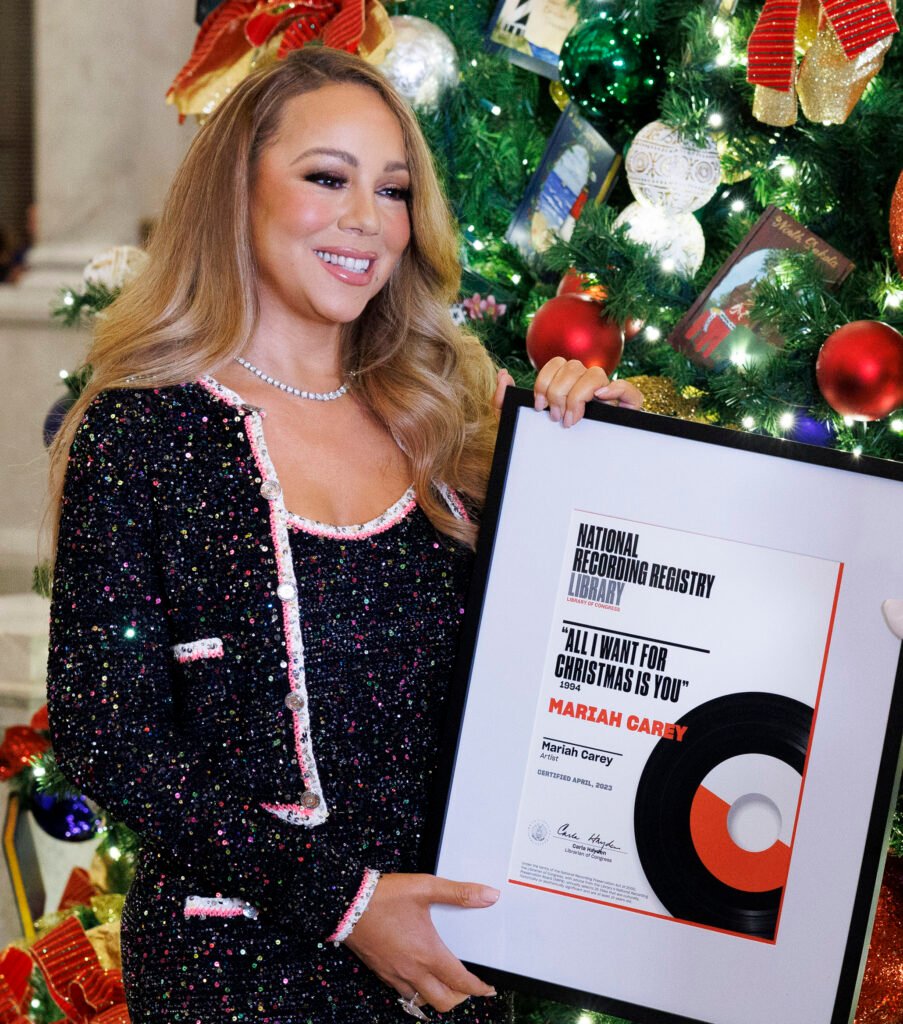Entertainment
Bobbi Althoff’s Husband Files for Divorce After 4 Years of Marriage on February 8, 2024 at 1:43 am News
The estranged couple got married in January 2020 and they share two children.The estranged couple got married in January 2020 and they share two children.
News Read More
Entertainment
Colombia’s ‘Doll’ Arrest: Police Say a 23-Year-Old Orchestrated Hits, Including Her Ex’s Murder

Authorities in Colombia say Karen Julieth Ojeda Rodríguez, 23, known as “La Muñeca” (“The Doll”), was arrested in early December on allegations she coordinated contract killings for the Los de la M gang and helped set up the murder of her ex-boyfriend in July. Police reported seizing a 9mm pistol and a revolver during the operation and are testing the weapons against recent homicides in Barrancabermeja, a city battered by drug-war killings this year.

What police allege
Investigators describe Ojeda Rodríguez as a youthful face with a senior role: not a trigger-puller, but a coordinator who relayed orders to sicarios, managed target selection, and handled logistics for a network tied to drug trafficking and extortion in Santander. They say she rose quickly within Los de la M, operating in hot spots like Barrancabermeja and Piedecuesta, where rivalries over territory and revenue have fueled violence.
The July killing at the center
Prosecutors allege she lured her ex-boyfriend, Deyvy Jesús García Palomino (“Orejas”), to a rural meeting on July 23 under the guise of settling a money dispute. When he arrived, two shooters on a motorcycle attacked at close range; he later died at the hospital. Investigators point to recovered messages to argue the meetup was a setup arranged in advance, and they claim she and an accomplice received roughly 4 million pesos—about $1,000—for the hit.
The December takedown
Police announced her capture following a targeted early-December sweep, framing it as a blow to Los de la M’s homicide pipeline.
Alongside Ojeda Rodríguez, officers detained an alleged accomplice known as “Gorda Sicaria” who purportedly passed orders to gunmen, and a man identified as “Leopoldo.”
Forensic tests on the seized weapons aim to link the guns to crime scenes amid a year marked by more than a hundred killings in Barrancabermeja, according to media cited by authorities.

A clear timeline
- July 23: Ex-boyfriend “Orejas” shot after a rural meetup; he dies in hospital the same day. Authorities later cite phone messages as evidence of premeditation.
- Late 2024: Police publicly identify “La Muñeca” as an alleged coordinator within Los de la M tied to multiple homicides in Santander.
- Early December 2025: Targeted operation results in the arrests of Ojeda Rodríguez and alleged accomplices; police seize a 9mm pistol and a revolver for ballistic testing.
Why the case resonates
The contrast between the “Doll” moniker and the accusations of top-level murder coordination has fueled global attention, while the intimate ex-partner setup adds a personal dimension to an already combustible gang narrative. Authorities caution that ballistic and judicial proceedings are ongoing, but they characterize the arrests as a significant hit to a group blamed for a wave of killings in the region.
Entertainment
Miley Cyrus Is Engaged to Maxx Morando

Miley Cyrus is officially off the market: the pop superstar is engaged to musician Maxx Morando after four years together, and the speculation about “that ring” has finally been put to rest. The engagement caps a quietly steady relationship that has unfolded mostly out of the spotlight, marking a new chapter for Miley after years of highly public romances.
Engagement finally confirmed
Reports from major entertainment outlets confirm that Cyrus and Morando are engaged following her recent red-carpet appearance in Los Angeles.
Observers noticed a new diamond ring on her left-hand ring finger, and sources close to the singer have since confirmed that the jewelry is indeed an engagement ring. The news comes after days of online buzz and fan speculation, which began almost as soon as photos from the event hit social media.
The love story with Maxx Morando
Maxx Morando is a drummer and musician who has performed with bands like The Regrettes and has also worked as a producer and collaborator behind the scenes. He and Miley were first linked in late 2021, reportedly after meeting through mutual friends and hitting it off on a low-key first date that eventually grew into a long-term relationship. The pair have kept things relatively private, appearing together at select fashion shows, award events, and premieres rather than turning their romance into constant social-media content.
That very on-trend engagement ring
The ring that set the internet on fire features a cushion-cut diamond set on a chunky yellow gold band, a bold, fashion-forward design that fits Cyrus’s eclectic style. The piece is reported to be by designer Jacquie Aiche, whose jewelry is frequently worn by celebrities and known for mixing bohemian influences with luxury materials. Commentators note that the thick band and substantial stone are in line with the current trend toward statement engagement rings that feel modern and personal rather than traditional and dainty.
Fans react to Miley’s new chapter
Longtime fans who have watched Miley grow from Disney Channel star to Grammy-winning artist see this engagement as another milestone in her evolution. On social platforms, many have highlighted how different this relationship feels compared with her past, pointing to the couple’s low-key approach and shared creative interests as signs of a more grounded partnership. Others are already speculating about wedding plans, guest lists, and whether the singer might channel her “Flowers” era energy into a bridal look that breaks all the rules.
What this means for Miley’s image
Cyrus has spent the last few years redefining herself musically and personally, from the success of “Flowers” to acclaimed live performances and a more polished public image. This engagement to Morando reinforces that arc, presenting her as an artist who has found balance between rebellion and stability, independence and partnership. While no wedding details have been announced yet, the announcement alone ensures Miley and Maxx will remain at the center of pop culture conversations for months to come.
Entertainment
Mariah Carey’s One Holiday Hit Pays her $3.3 Million a Year

Mariah Carey did not just land a Christmas hit; she locked in a seasonal paycheck for life. Every year, All I Want for Christmas Is You is estimated to pull in somewhere between 2.5 and 3.3 million dollars in royalties, from streaming, radio, licensing, and all those store playlists that flip her on the second the Halloween decorations come down. Over three decades, that adds up to tens of millions tied to a single song, turning one holiday anthem into a textbook example of how a perfectly timed pop track can become a retirement plan in glitter.

What keeps it so sticky is how audiences respond to it emotionally. Fans describe the song as an instant mood-lifter: the kind of track that makes people abandon their carts in Target, sing in the dairy aisle, or scream the chorus in the car like a full-blown music video moment.
People love the mix of old-school Motown-style production, sleigh bells, and Mariah’s big, joyful vocals—it feels nostalgic without sounding dated, and romantic without being corny to most listeners.
For a lot of millennials and Gen Z, hearing that opening piano riff is the unofficial signal that the holidays have “officially started.”
Of course, the obsession is loud enough that the backlash is, too—but even the complaints prove its impact. Some listeners say they are tired of hearing it everywhere, from October onward, but that is partly because it dominates every Christmas playlist, radio rotation, and TikTok trend. Whether people are passionately belting it out or dramatically rolling their eyes, the engagement keeps the streams flowing—and the royalties stacking. Love it or hate it, All I Want for Christmas Is You has become the soundtrack to December, and Mariah collects a festive multimillion-dollar “thank you” every single year.

 Entertainment5 days ago
Entertainment5 days agoWicked Sequel Disappoints Fans: Audience Verdict on For Good

 Entertainment3 weeks ago
Entertainment3 weeks agoAfter Party: Festival Winner for Best Romantic Short

 News3 weeks ago
News3 weeks agoCamp Wackapoo – Rise of Glog Takes Center Stage

 News2 weeks ago
News2 weeks agoYolanda Adams Questions Traditional Views on God’s Gender, Audience Reacts

 Entertainment3 weeks ago
Entertainment3 weeks agoFrancisco Ramos Takes Top Mockumentary Award at Houston Comedy Film Festival

 Politics3 weeks ago
Politics3 weeks agoTrump’s $2,000 Tariff Dividend Plan: Who Gets Paid?

 Politics4 weeks ago
Politics4 weeks agoMamdani’s Victory Triggers Nationwide Concern Over New York’s Future

 Film Production3 weeks ago
Film Production3 weeks agoWhy China’s 2-Minute Micro Dramas Are Poised To Take Over The U.S.




























